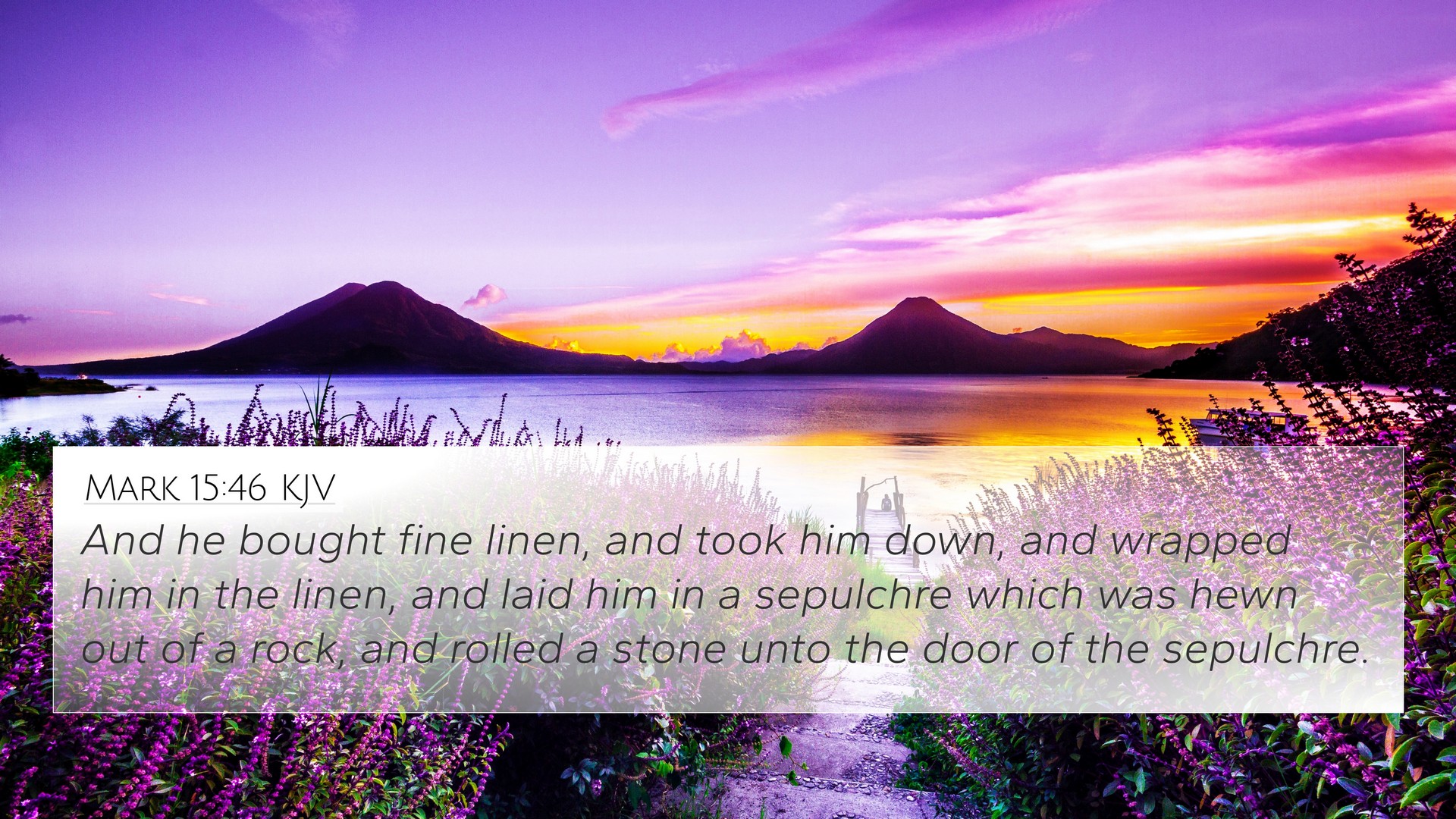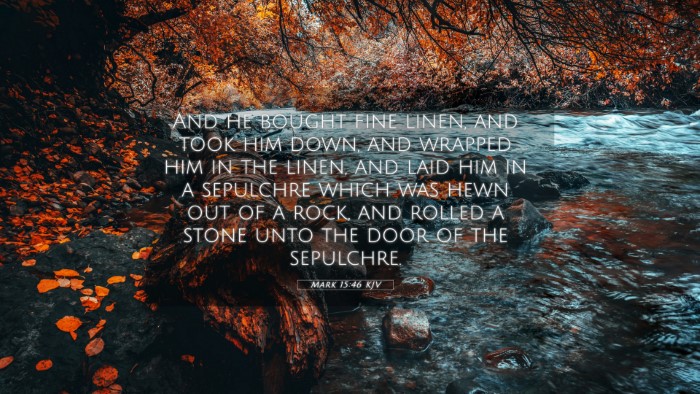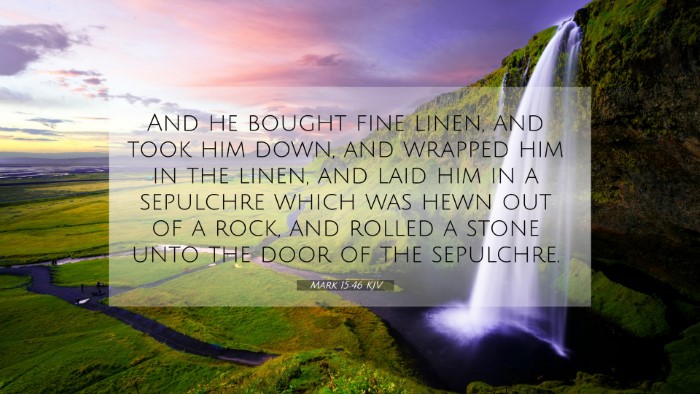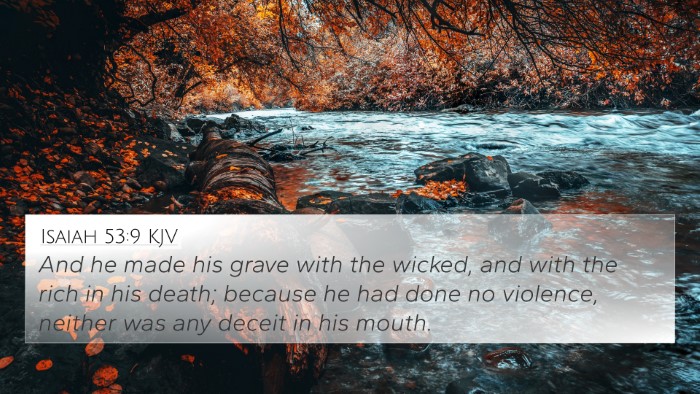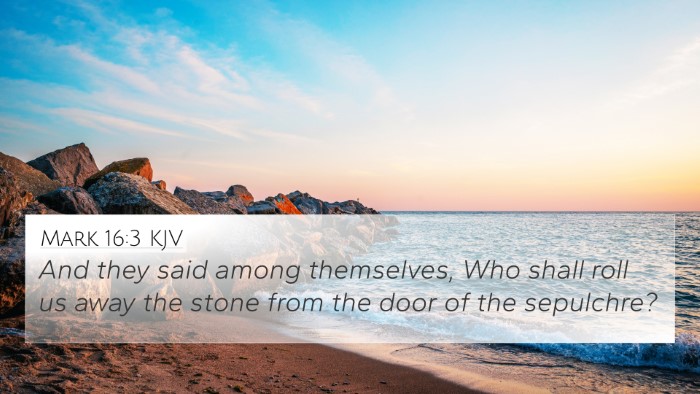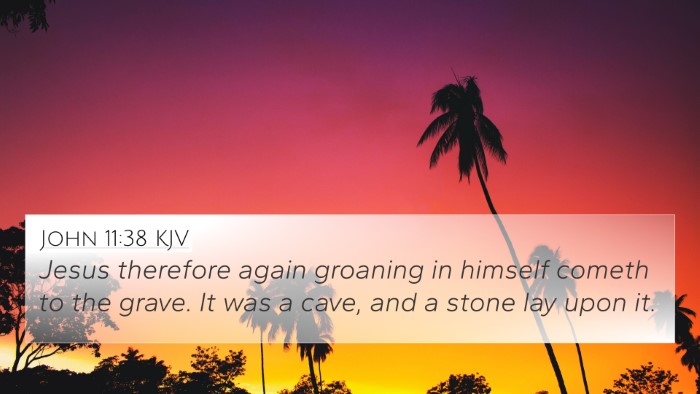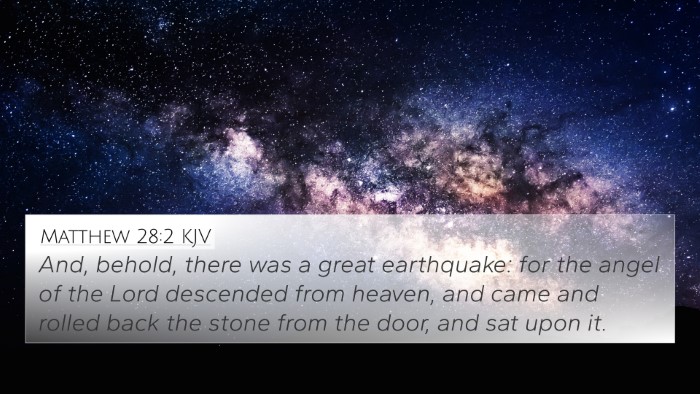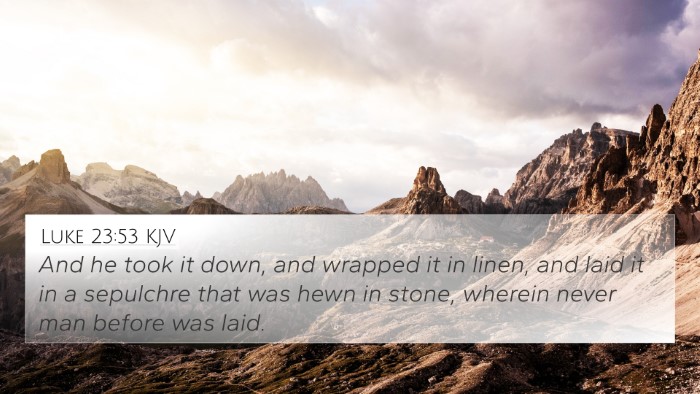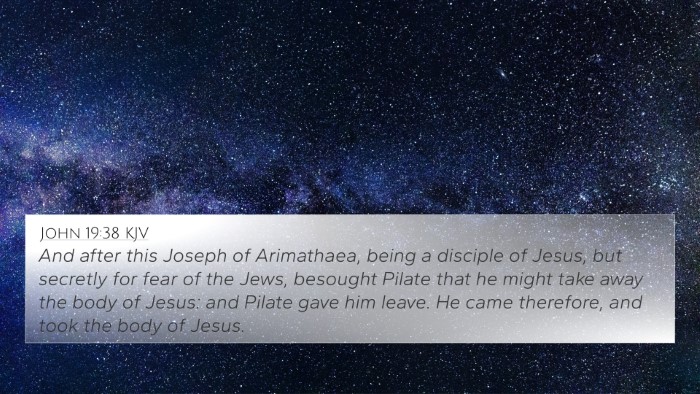Understanding Mark 15:46
Mark 15:46 states:
"And he bought fine linen, and took him down, and wrapped him in the linen, and laid him in a sepulcher which was hewn out of a rock, and rolled a stone unto the door of the sepulcher."
This verse occurs within the context of Jesus' crucifixion and burial, detailing the actions of Joseph of Arimathea, who took responsibility for Jesus' body after His death. Below, we explore the meaning and significance of this verse through insights derived from various public domain commentaries.
Meaning and Significance
The passage highlights several key themes:
- Joseph’s Courage: Joseph of Arimathea, a member of the Sanhedrin, exhibited bravery by publicly claiming the body of Jesus, opposing the prevailing sentiment of the Jewish leadership who condemned Jesus.
- Fulfillment of Prophecy: This act aligns with Old Testament prophecies regarding the Messiah's burial. Isaiah 53:9 states:
"And he made his grave with the wicked, and with the rich in his death..."
- Significance of the Linen Cloth: The fine linen symbolizes purity and respect, emphasizing the honor bestowed upon Jesus even in death, as was customary for dignified burials.
- Symbolism of the Rock-Hewn Tomb: The tomb being hewn from rock signifies permanence and safety, describing the nature of the burial site which protected the body until the resurrection.
- Rolled Stone and Resurrection Foreshadowing: The rolling of the stone to seal the tomb foreshadows the miraculous event of the resurrection, which is central to Christian faith.
Connections with Other Bible Verses
Mark 15:46 connects with various other scriptures that provide deeper insights and thematic links:
- Isaiah 53:9: Discusses the burial of the righteous, linking to the fulfillment of prophecy regarding Jesus’ death.
- Luke 23:50-54: Provides additional details regarding Joseph of Arimathea, corroborating the account in Mark and highlighting his role in Jesus’ burial.
- John 19:38-42: Further elaborates on Joseph’s actions as well as detailing the involvement of Nicodemus in the burial process.
- Matthew 27:57-61: Offers a parallel account of the burial of Jesus, emphasizing the details surrounding the tomb and the sealing of the stone.
- Psalms 16:10: Predicts the preservation of the Messiah from decay, correlating with the significance of His burial.
- 1 Corinthians 15:4: Discusses the importance of Jesus’ burial in the context of the resurrection and the Gospel message.
- Hebrews 10:20: Highlights the new and living way opened through the death of Jesus, which begins at His burial and culminates in His resurrection.
Thematic Bible Verse Connections
Throughout Scripture, various themes recur that link together the narratives surrounding Jesus' burial and resurrection:
- Prophecy and Fulfillment: Mark 15:46 exemplifies the continued unfolding of Biblical prophecy and its realization through the narrative of Jesus’ life, death, and resurrection.
- Death and Resurrection: The juxtaposition of death (Jesus' burial) and resurrection creates foundational tenets of Christianity, reinforcing belief in life after death.
- Honor in Burial: The cultural practices surrounding burial in Scripture highlight the importance of honoring the deceased, evident in Joseph's respectful treatment of Jesus’ body.
- Faith in Action: Joseph’s actions serve as an example of faith expressed through courageous deeds, inspiring believers to act upon their convictions.
Scriptural Cross-Referencing
Cross-referencing these verses reveals coherent themes and a unified message throughout the canon of Scripture:
- Tools for Bible Cross-Referencing: Utilize a Bible concordance or a cross-reference Bible study guide to explore related verses deeply.
- Comparative Bible Verse Analysis: Engage in comparative studies by examining how different Gospel accounts illustrate the events surrounding Jesus' death and burial.
- Cross-Referencing Themes: The interconnectedness of Old and New Testament texts enhances understanding of Biblical themes and doctrines.
- Inter-Biblical Dialogue: This dialogue between Scriptures sheds light on the overarching narrative of redemption and grace prevalent in the Bible.
- How to Identify Cross-References: Learning how to find cross-references in the Bible reveals intricate relationships and theological insights.
Bible Cross-References for Further Study
As you delve deeper into the study of Mark 15:46, consider the following passages for cross-referencing:
- Exodus 30:23-25: Discusses the anointing oils, hinting at the significant rituals associated with death and burial.
- Matthew 12:40: Jesus Himself refers to His burial and resurrection, drawing a parallel to Jonah's experience.
- Philippians 2:7-8: Emphasizes Jesus’ humility in His earthly ministry, culminating in His death.
- Romans 6:4: Reflects on the symbolism of burial in the water of baptism, linking Jesus’ death with believers’ new life.
Conclusion
Mark 15:46 serves as a pivotal moment in New Testament narrative, capturing the sanctity of Jesus' burial and its implications for believers. Through a comprehensive study of related verses and themes, one gains a fuller understanding of Jesus' mission and the fulfillment of God's redemptive plan. By employing tools for Bible cross-referencing and observing thematic connections between verses, readers can appreciate the profound interconnectedness present within the Scriptures.
Final Thoughts
The study of Mark 15:46, through the lenses of various commentaries and overlapping scriptures, encourages readers to meditate on the life, death, and resurrection of Jesus Christ. Engaging in cross-referencing with these insights provides a richer perspective on how individual verses relate to the totality of Biblical teachings.
